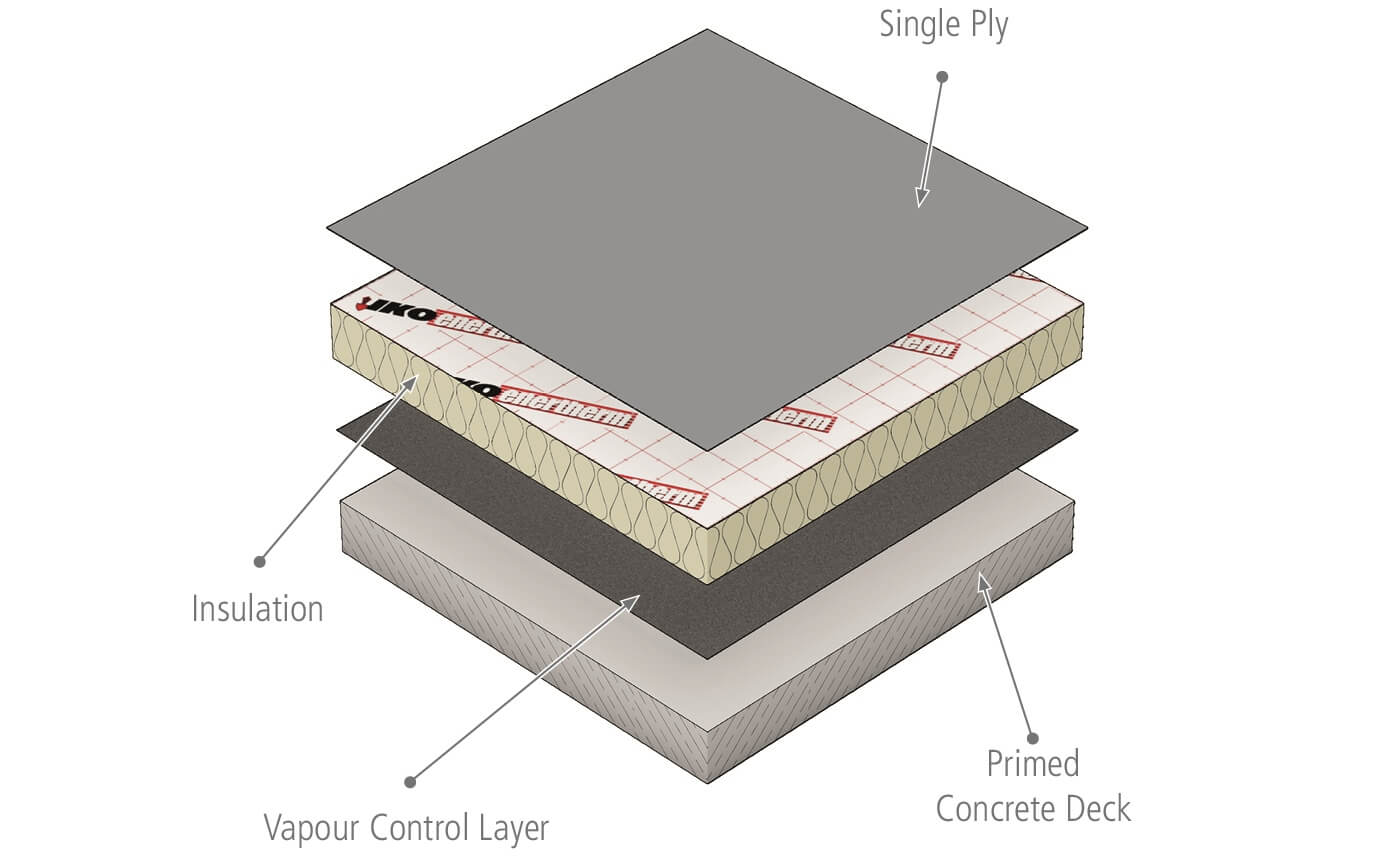Vapour Control Layer For Warm Flat Roof

Vapour control layers at roofing superstore our choice of flat roof materials includes everything you need to create a long lasting weather proof flat roof that performs and looks good too.
Vapour control layer for warm flat roof. This is known as a vapour control layer vcl or a vapour retarder. With any warm flat roof detail such as this a vapour control layer should have been laid on top of the roof deck underneath the insulation. The notion behind a vapour control layer is to install it on the room side of the insulation so it stops the passage of warm moist air entering the structure. The answer to keeping timber framed walls and roofs dry is to use a layer to restrict the flow of moisture but not to try and stop it.
It s the first line of defence against high vapour pressure air entering the roof structure and causing interstitial condensation. Using a vapour control layer to control condensation. Including fibreglass roof kits torch on felt and liquid rubber products everything you need for flat roofing is in one place. If this has not been done then we would recommend that you install one underneath the joists before the plasterboard goes up.
A vapour control layer or vcl on a warm flat roof sits between the roof decking and the insulation. A vapour control layer helps you shield your building from the consequences of condensation. Condensation is generated when warm moist air rises and condenses into a liquid on contact with the cooler areas above the insulation. This could be a 1000 gauge min polythene sheet.
It has transpired that there is no vapour control layer fitted. Vapour control layers should be provided to warm roofs and. The architect plans stated requirement for a vapour control layer below the insulation or a 3 in 1 insulation board including vapour control layer and an additional foil backed plasterboard. The roof is an unventilated warm roof design finished with a single ply membrane.
A vapour control layer is designed to catch this vapour preventing it from condensing on the insulation or elsewhere in the loft space or attic. Be it a cold or warm roof construction the primary function of a vcl is to keep warm moist air from inside the building inside the building. A vcl is always used as close to the inner face of a wall as possible and reduces the amount of moisture passing through the layer to low levels ensuring only insignificant amounts of condensation occur within the structure.














































